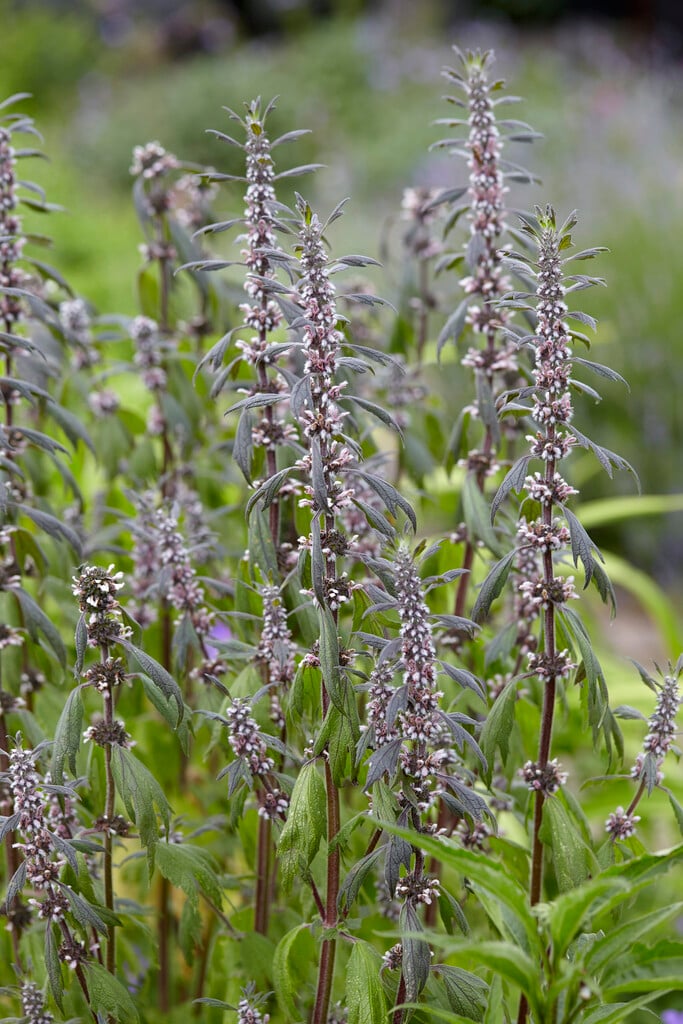Leonurus cardiaca
motherwort
A deciduous, herbaceous perennial wildflower with deeply-lobed palmate green foliage and whorls of purple-pink to white flowers with purple-spotted lips around a central stem which appear in the summer. Known for it's historical use in medicine for heart-related issues and also a great source of nectar for pollinating insects. Honey made from the nectar of this plant has a strong, mint-like flavour
Size
Ultimate height
1.5–2.5 metresTime to ultimate height
2–5 yearsUltimate spread
0.5–1 metresGrowing conditions
Moisture
Moist but well–drainedpH
Acid, Alkaline, NeutralColour & scent
| Stem | Flower | Foliage | Fruit | |
| Spring | Green | |||
|---|---|---|---|---|
| Summer | Purple Pink White | Green | ||
| Autumn | ||||
| Winter |
Position
- Partial shade
Aspect
East–facing or North–facing or South–facing or West–facing
Exposure
Sheltered Hardiness
H4Botanical details
- Family
- Lamiaceae
- Native to GB / Ireland
- No
- Foliage
- Deciduous
- Habit
- Bushy
- Name status
Correct
- Plant range
- Europe, from Scandinavia to N Spain, Italy and Greece, naturalised in S Britain
How to grow
Cultivation
Grow from seed (these may benefit from being cold-stratified) or by rooted cuttings taken from established plants. Grow in well-drained soil in sun or part shade
Propagation
Prefers well-drained, poor soil but wiill grow almost anywhere and can cope with heavy soils
Suggested planting locations and garden types
- Architectural
- Cottage and informal garden
- Wildflower meadow
- Wildlife gardens
- Low Maintenance
- Flower borders and beds
Pruning
Cut back after flowering
Pests
Generally pest-free
Diseases
Generally disease-free
Love gardening
Sign up to receive regular gardening tips, inspiration, offers and more
View our Privacy Policy
Get involved
The Royal Horticultural Society is the UK’s leading gardening charity. We aim to enrich everyone’s life through plants, and make the UK a greener and more beautiful place.

